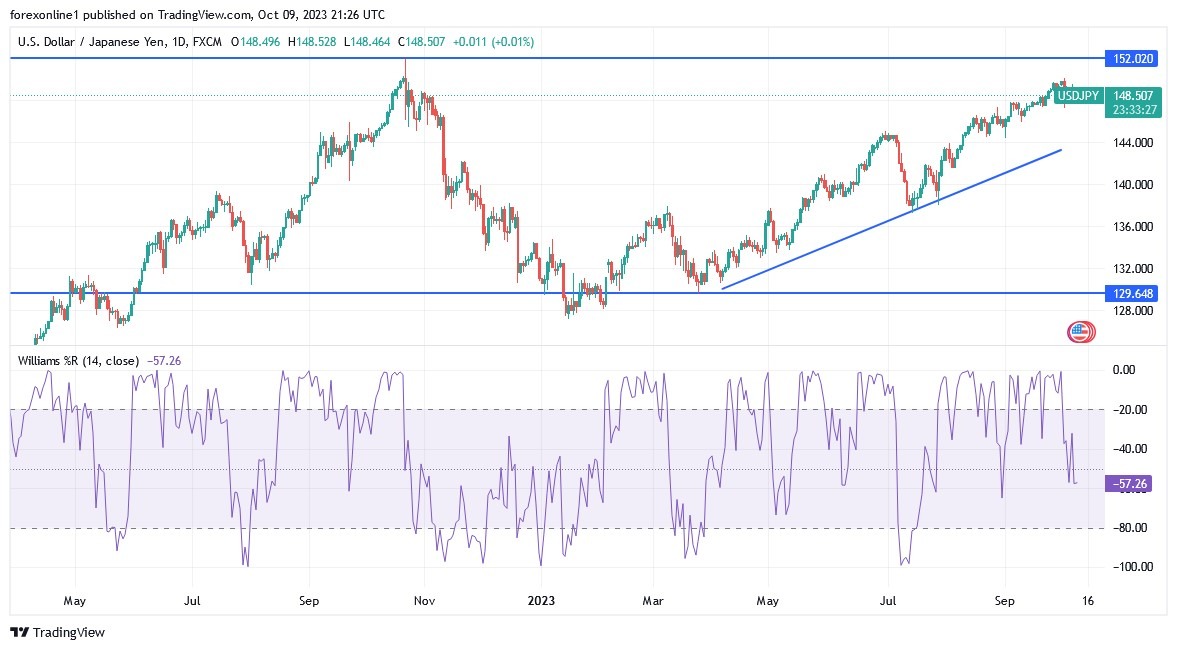Amid global concern over developments in the Middle East, investors have increased their interest in buying safe havens, led by both the US dollar and the Japanese yen. Accordingly, the USD/JPY currency pair jumped towards the resistance level of 149.23 before settling around the level of 148.70 at the time of writing the analysis. Global stock markets were in decline at the beginning of the new week's trading due to growing geopolitical concerns centered in the Middle East following the attacks launched by Hamas over the weekend on the State of Israel. However, there are signs that these market movements are temporary.
Top Forex Brokers
Accordingly, the dollar rose, and the price of crude oil rose by up to 5.0%, but in the end it gave up many of the gains. Currently, the focus of concern returns to Iran - which has long been a sponsor of Hamas - and which remains the main supplier of oil to global markets.
Investors are wondering whether Israeli operations will extend to this major oil-producing country, or at least whether global sanctions on Tehran will be tightened. As is known, rising oil prices raise inflation expectations, which in turn supports global bond yields. Rising bond yields have already been a concern for investors recently, as they point out that the cost of borrowing is rising, indicating more difficult times ahead for households and businesses.
This in turn supports the US dollar, which benefits from rising US bond yields and the demand for safe havens resulting from falling markets. The main question facing investors at the beginning of the week is to what extent the geopolitical escalation in oil prices and the US dollar can extend. Commenting on this, Nigel Green, CEO of DeVere Group, says: “Historically, markets have rebounded from geopolitical crises.” “I would urge investors to avoid knee-jerk reactions to rising oil prices.”
Prior to that, WTI prices fell 9.0% last week, and despite the conflict in the Middle East, they were only up 2.72% at the time of writing. It was up as much as 5.0% earlier in the day. In fact, the initial rally has faded somewhat, and it appears that crude oil has a mountain to climb if it is to reverse declines associated with concerns about the global growth outlook.
The DXY dollar index - a broad measure of the dollar's performance - was up 0.40% at 106.51 and remains well supported. The US currency remains on an uptrend, and this could continue, although the main driver here will likely remain rising US bond yields rather than geopolitical concerns.
According to recent Forex market trading. The selling of the Japanese yen continued last week as the rise in the US Dollar Index (DXY) gained strength. The exchange rate of the US dollar against the Japanese yen rose to its highest level at 147.72, the highest level since November of last year. Likewise, GBP/JPY and EUR/JPY rose to 185 and 158, respectively. The Japanese yen witnessed notable selling even after the Bank of Japan changed its tone a few months ago. The bank decided to adjust its yield curve policy, raising the 10-year yield to 0.65%.
Expectations of the dollar against the Japanese yen:
- The daily chart shows that the USD/JPY exchange rate has been in a strong upward trend for a while.
- The pair was able to flip the important resistance level at 145 (June 30 high) to the support level.
- Moreover, the USDJPY pair rose above the 25-day and 50-day Exponential Moving Averages (EMA).
- It is also located just below the upper side of the rising channel.
- The price is also above the Ichimoku Cloud while the MACD has moved above the neutral point.
Therefore, USD/JPY is likely to continue rising as buyers target the next major resistance level at 151.96 (October 22 high). The alternative scenario is for the currency pair to retest the lower side of the ascending channel at the 140 support level.
Ready to trade our Forex daily forecast? We’ve shortlisted the top forex brokers in the industry for you.


